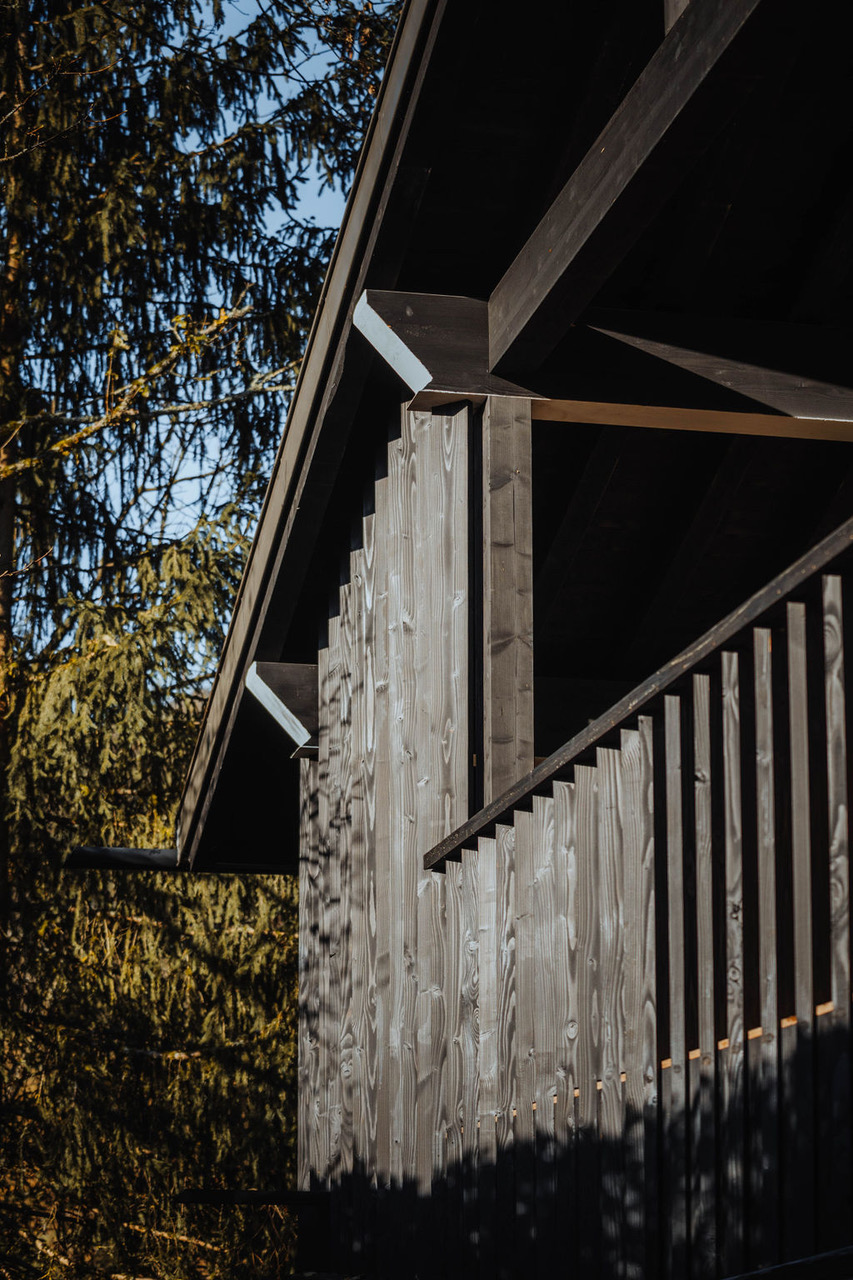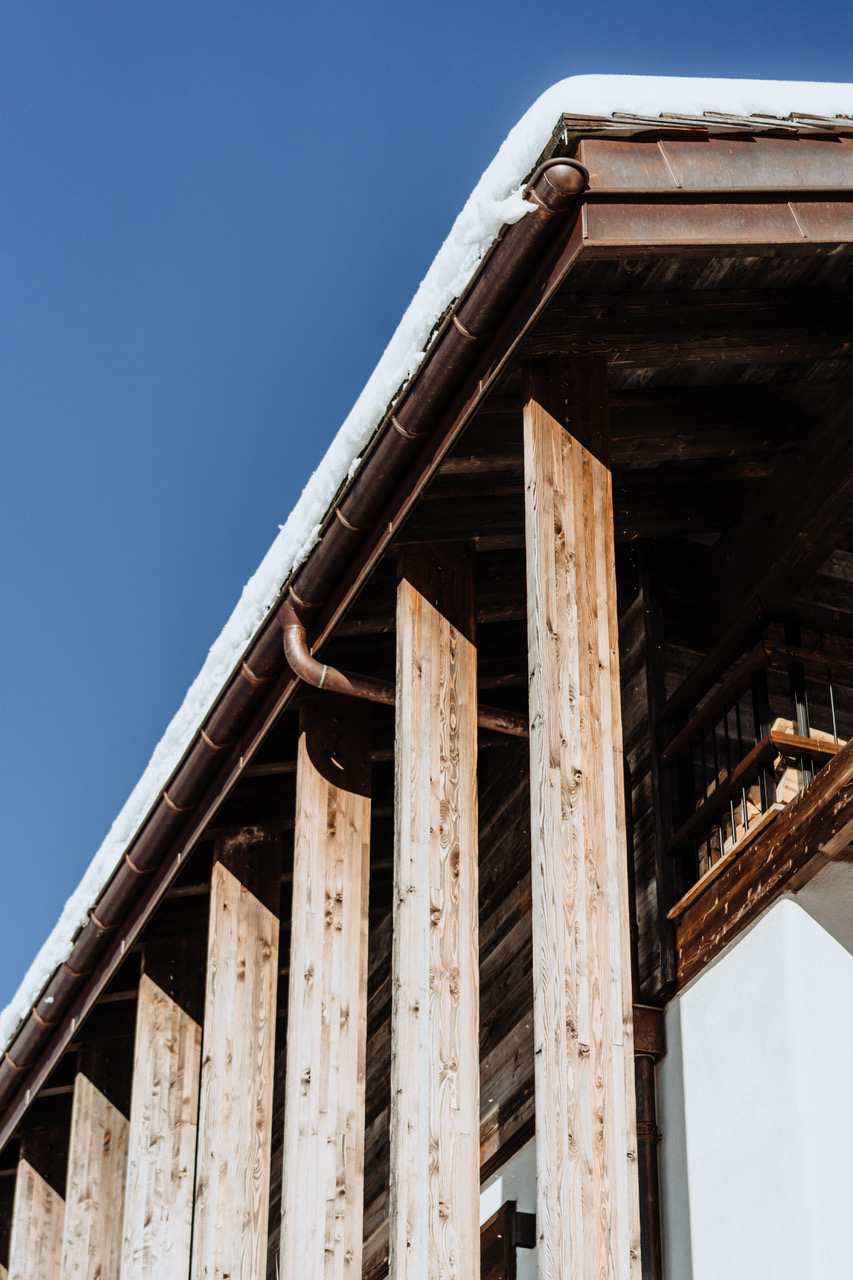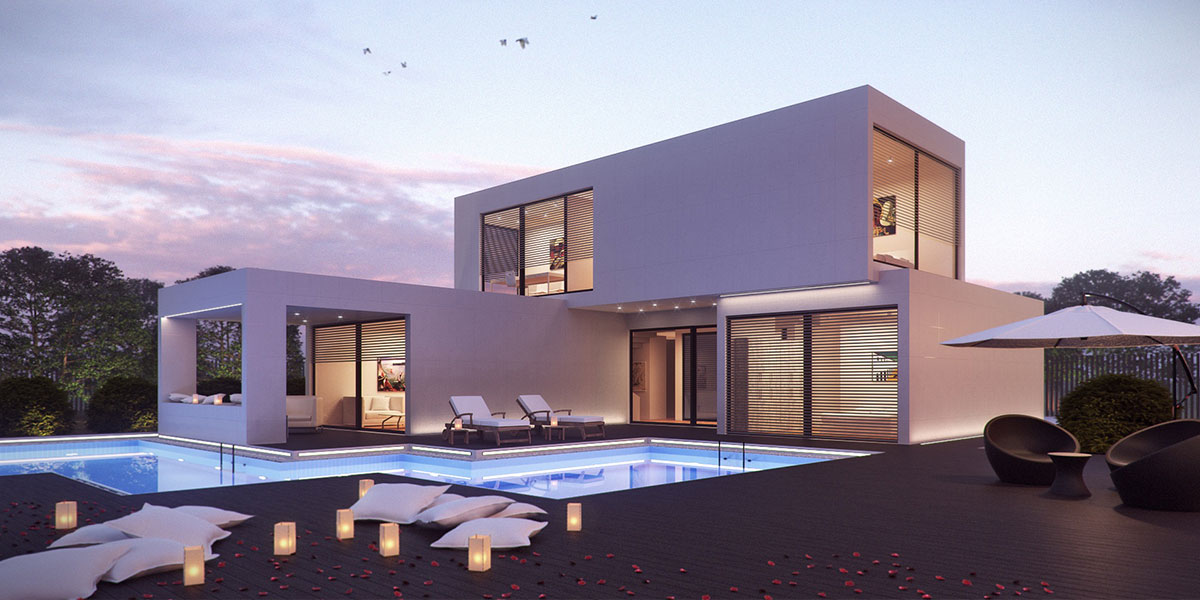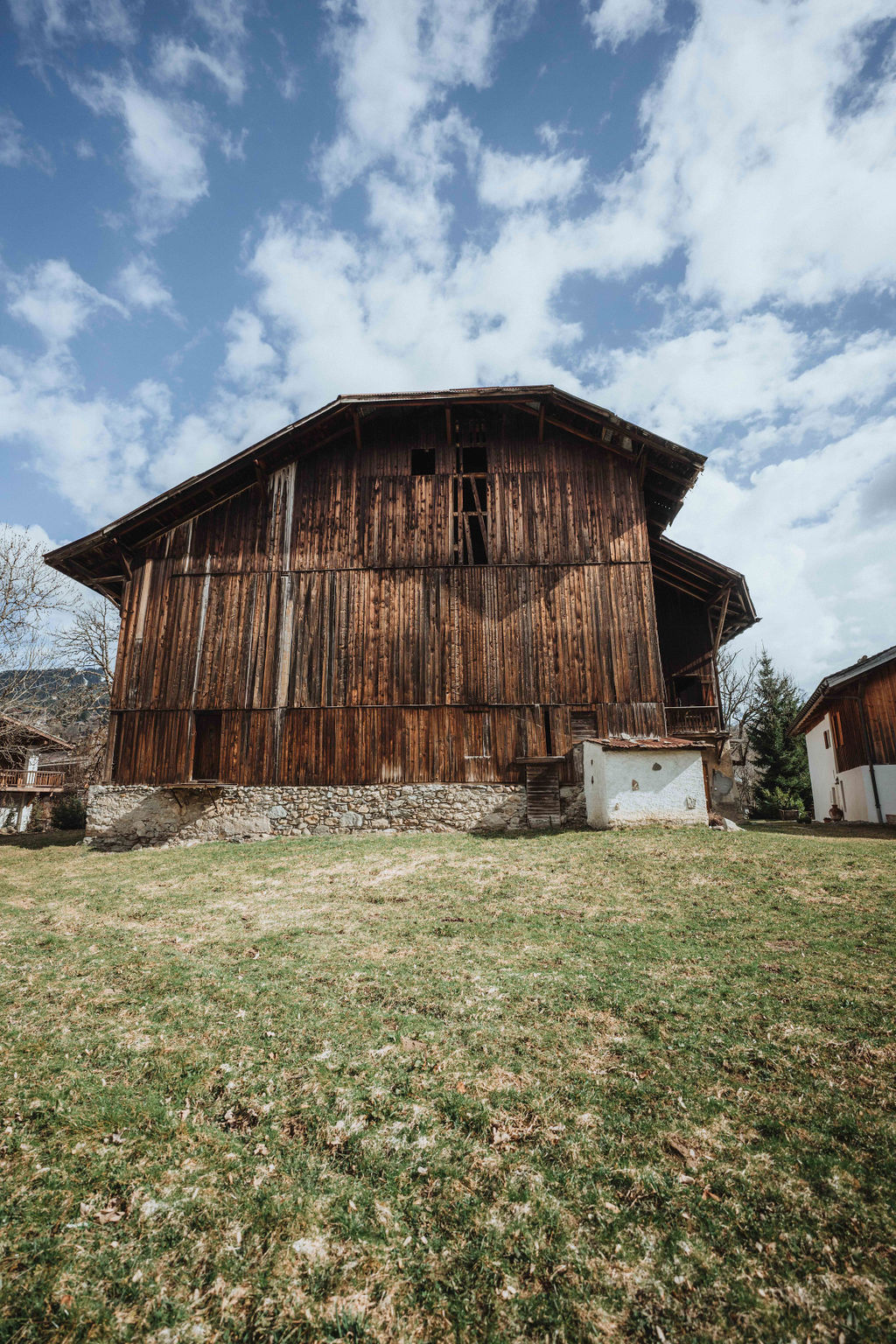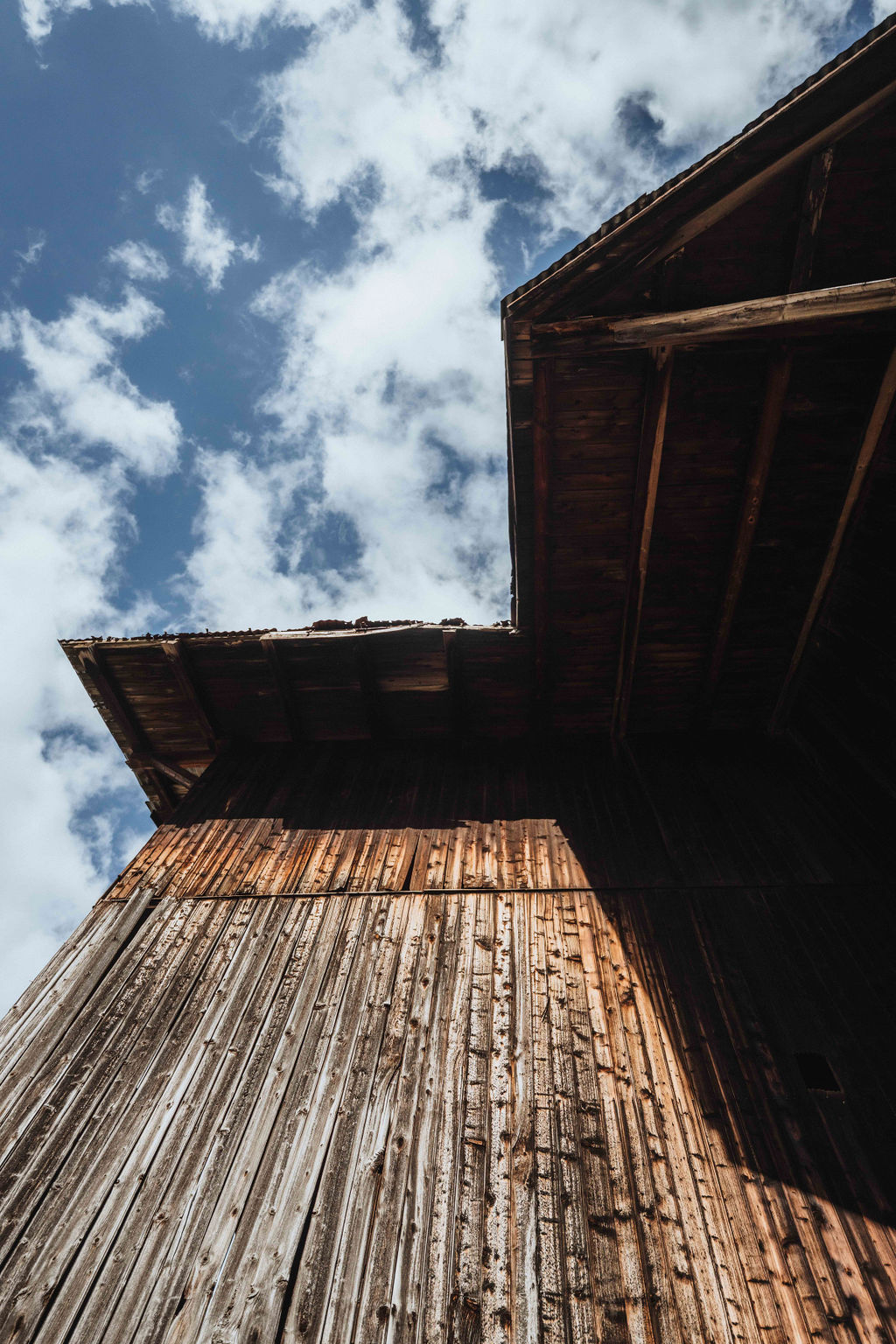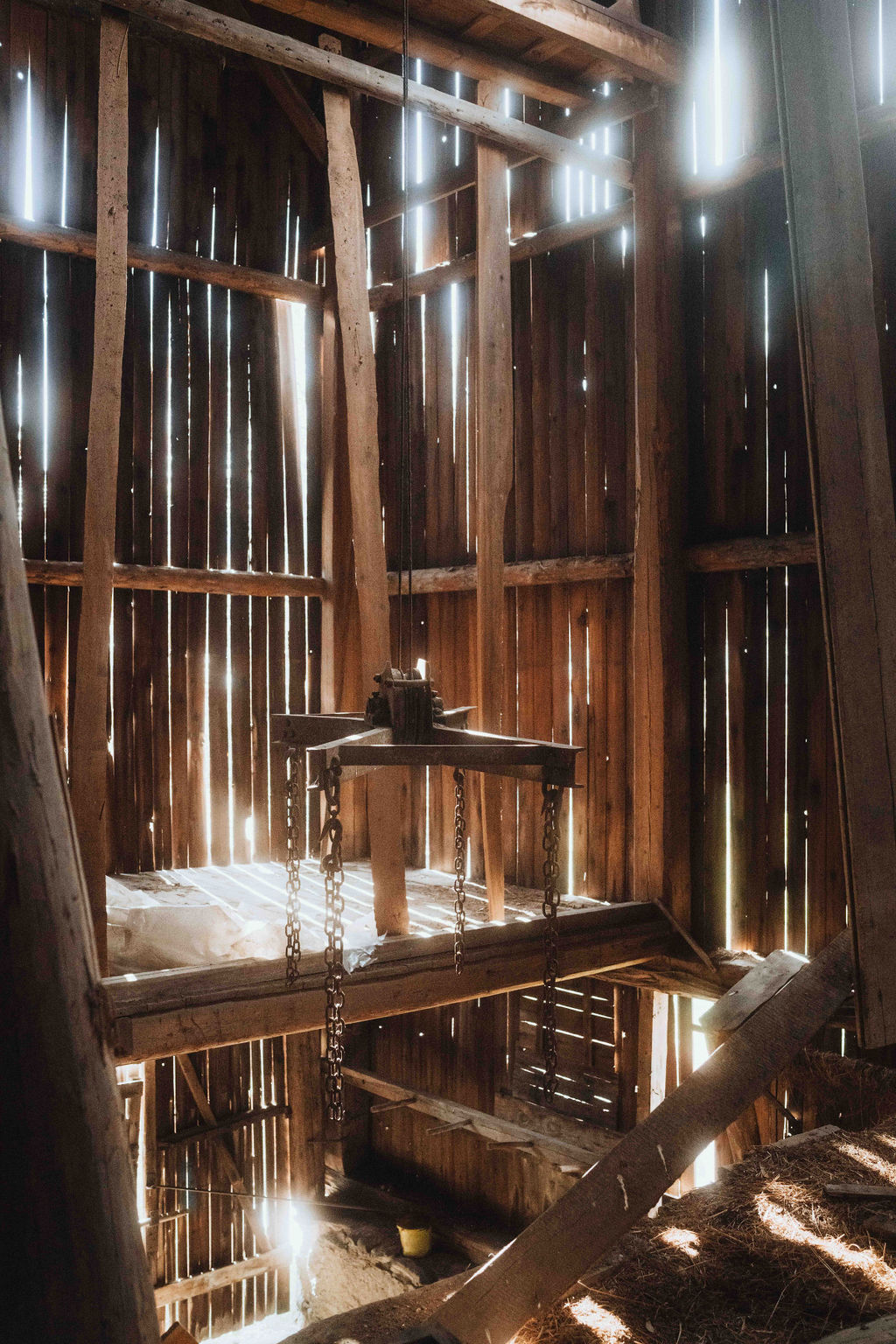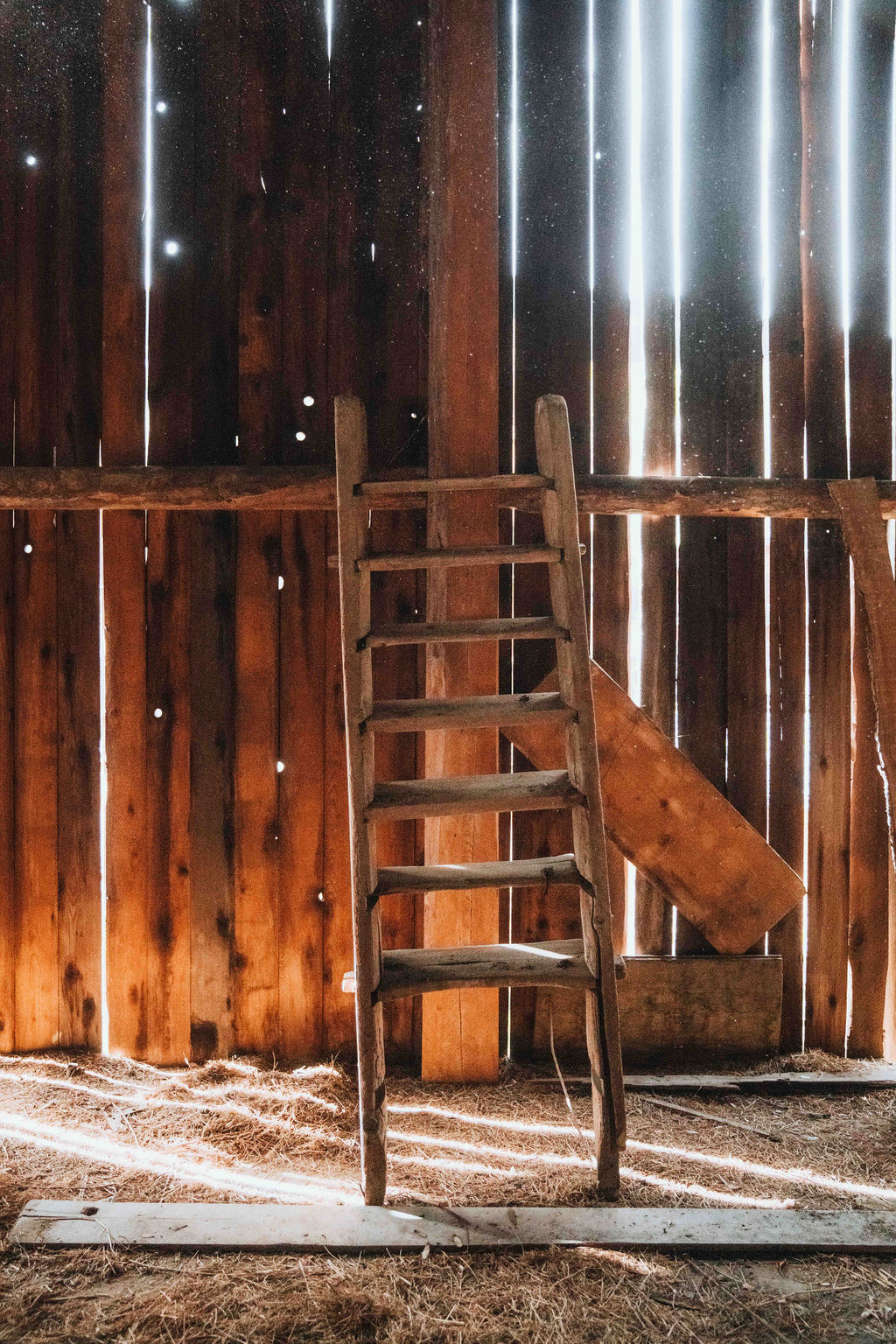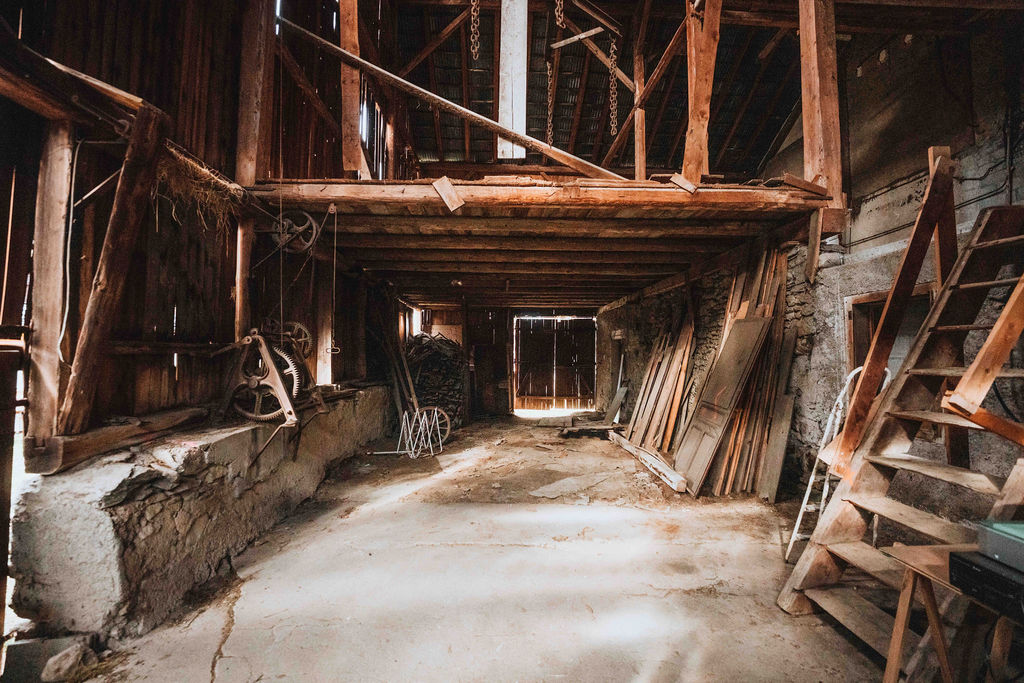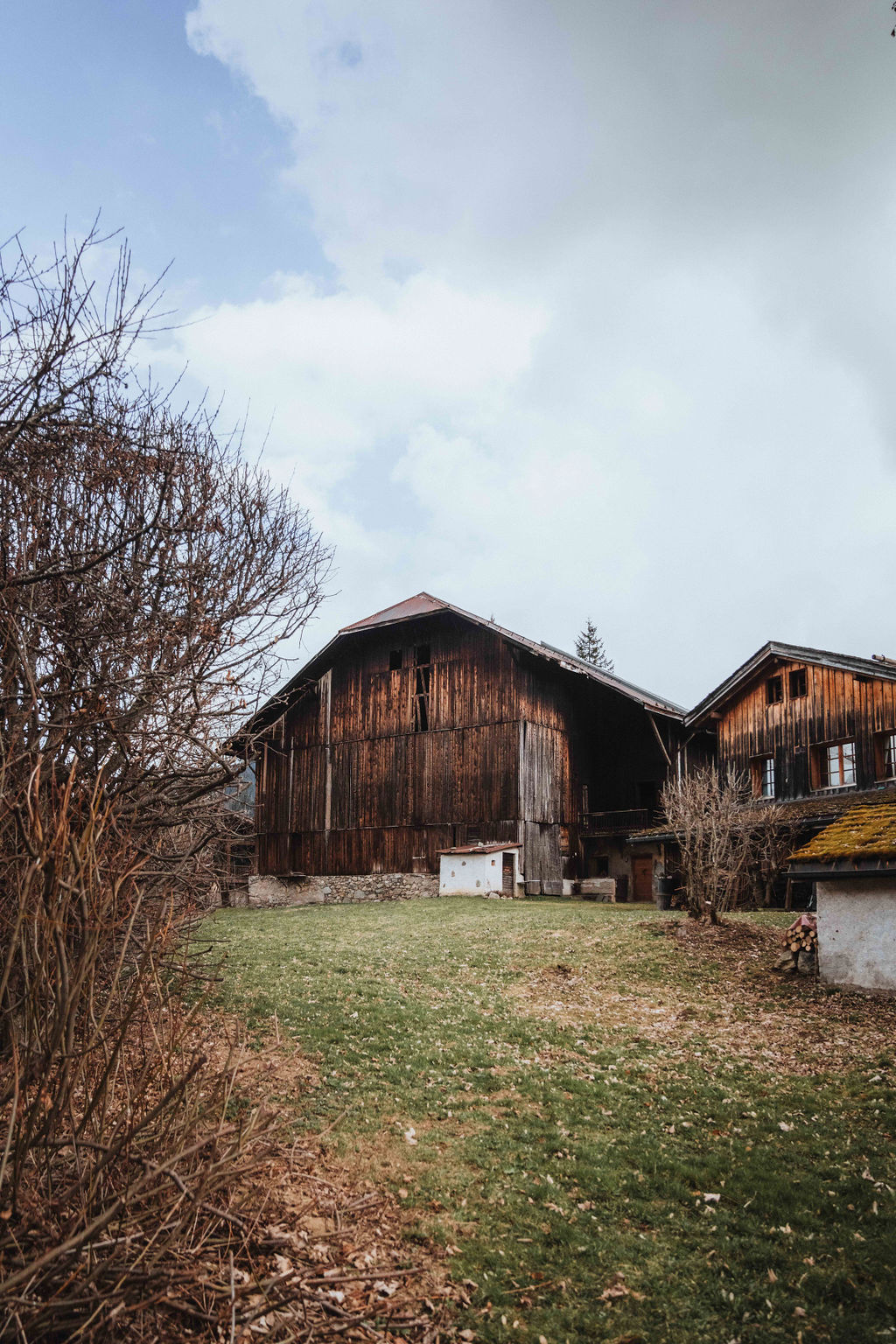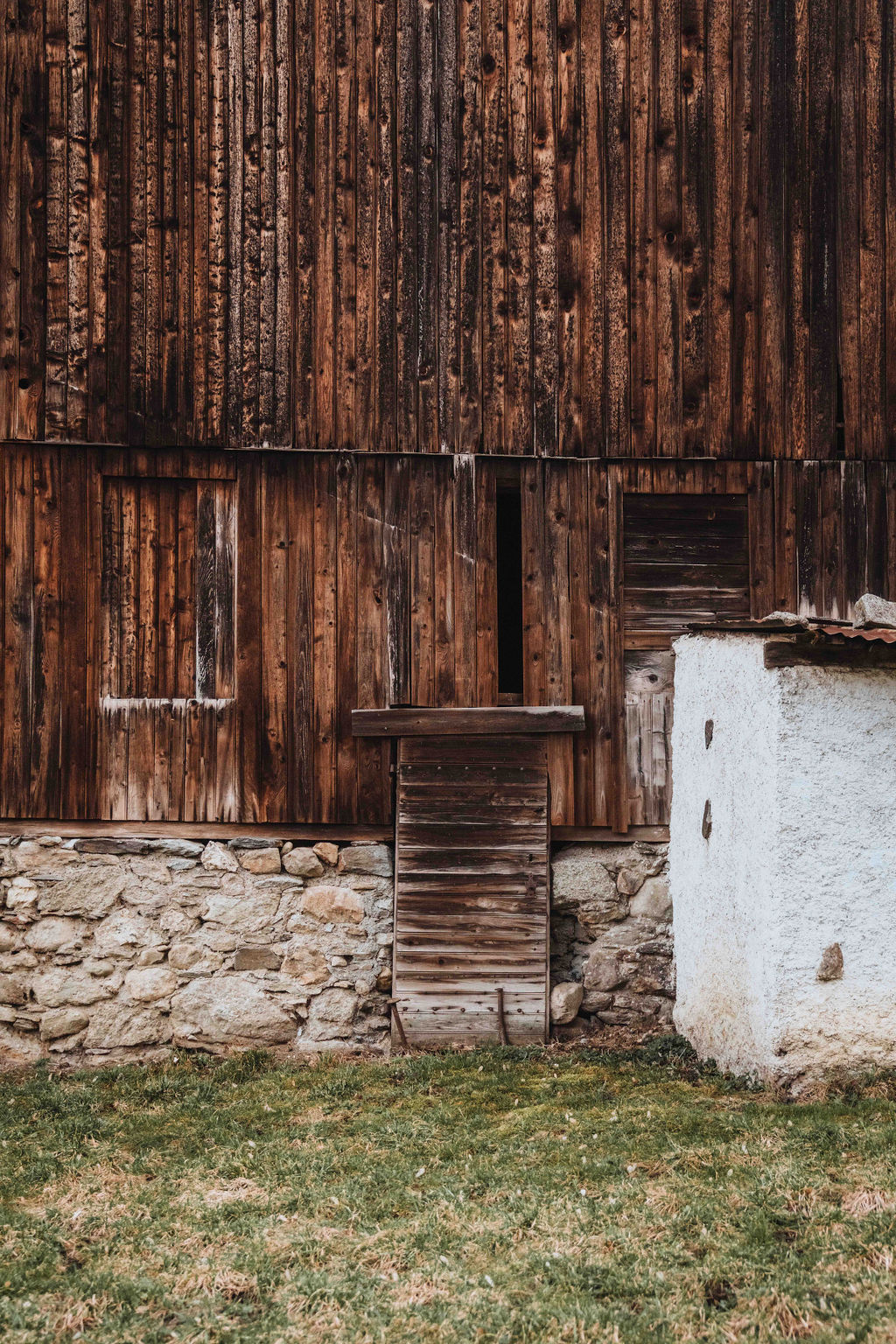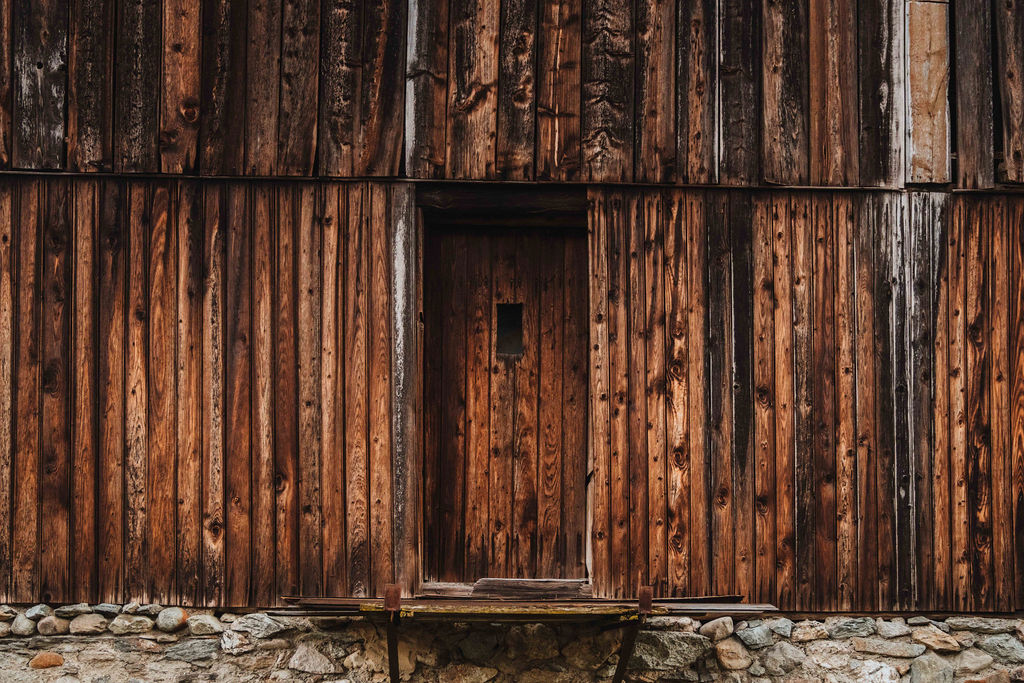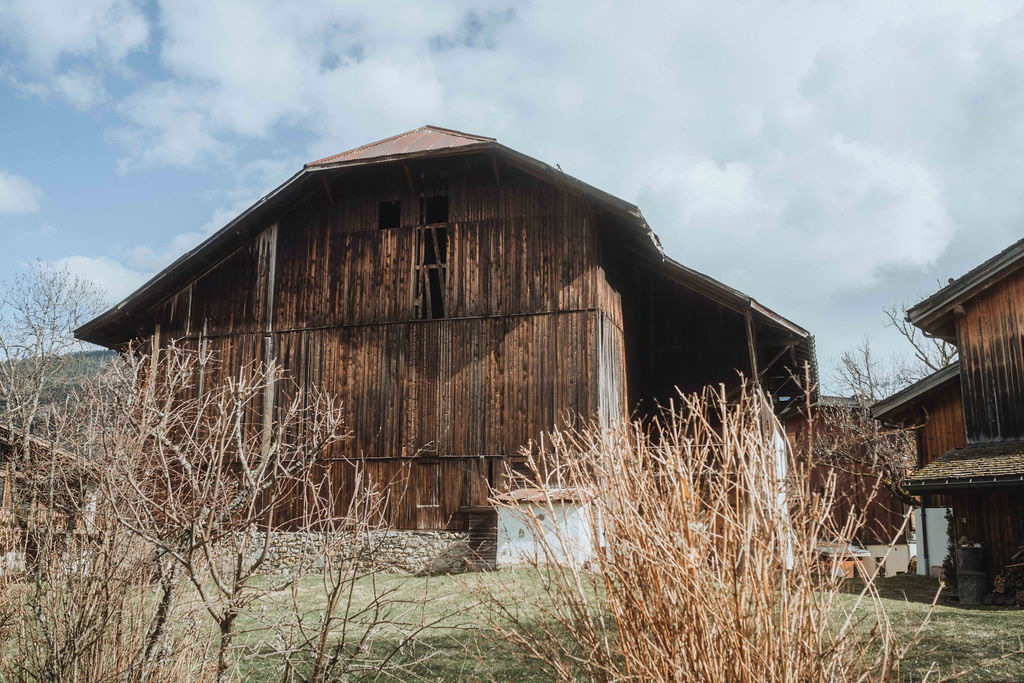Grange du Jaillet

Description du projet
Il s’agit d’un bâtiment repéré d’intérêt patrimonial agro-pastoral. Cette grange est visible sur les premières photos disponibles de Megève, courant début XXème siècle. Il n y à malheureusement pas d’éperon permettant d’authentifier une date de construction. Situé en lisière du village, cette grange atypique de part sa volumétrie, est transformée en demeure familiale. L’idée est simple : conserver l’aspect cossu et pragmatique de la bâtisse. Il s’agit du principe de « poupée russe », construire des volumes dans le volume existant.
Autrefois, cette grange été répartie en trois usages : bergerie & remise au rez-de-chaussée et le fénil (grange à foin) sur les 3 niveaux supérieurs. La bâtisse existante n’est pas déposée. La charpente bois est conservée et renforcée. Les complexes de mur, isolation et étanchéité son fait par l’intérieur. Le bardage est changé seulement aux endroits nécessaires, l’aspect aléatoire de celui-ci ajouré est préservé. Les volets crées sont réalisés à partir des planches de bardage existantes et montées sur des cadres invisibles afin de conserver au mieux, dans ce cas également, l’aspect de la façade existante.
Une nouvelle structure est édifiée part l’intérieur. Afin d’être le plus discret possible, celle-ci est métallique permettant ainsi la mise en oeuvre de dalle béton sans porter préjudice à la charpente bois.
Une façade rideau de verre est édifiée par l’intérieur créant ainsi de volumes hybrides intérieurs/extérieurs. Seules quelques ouvertures en clair de vitrage son ouvertes dans les façades. Ce dispositif permet de préserver l’atmosphère lumineuse spécifique des granges, un rayon de lumière franc et découpé, ce qui pourrait être estimé comme un élément de patrimoine immatériel.
This building has been identified as having agricultural and pastoral heritage value. The barn can be seen in the earliest photos available of Megève, dating from the early 20th century. Unfortunately, there is no spur to help authenticate the date of construction. Located on the edge of the village, this unusual barn, with its unusual proportions, has been converted into a family home. The idea is simple: to preserve the building's opulent and practical appearance. The principle is that of a ‘Russian doll’, building volumes within the existing volume.
In the past, this barn was divided into three areas: a sheepfold and storeroom on the ground floor and a hayloft on the three upper floors. The existing building has not been demolished. The wooden frame has been preserved and reinforced. The walls, insulation and waterproofing have been done from the inside. The cladding has only been changed where necessary, preserving its random, openwork appearance. The shutters are made from the existing cladding boards and mounted on invisible frames in order to preserve the appearance of the existing façade as much as possible.
A new structure is being built from the inside. In order to be as discreet as possible, it is made of metal, allowing concrete slabs to be installed without damaging the wooden frame.
A glass curtain wall is built from the inside, creating hybrid interior/ exterior spaces. Only a few clear glass openings are made in the façades. This design preserves the specific light atmosphere of the barns, with a clear, cut-out beam of light, which could be considered an element of intangible heritage.
